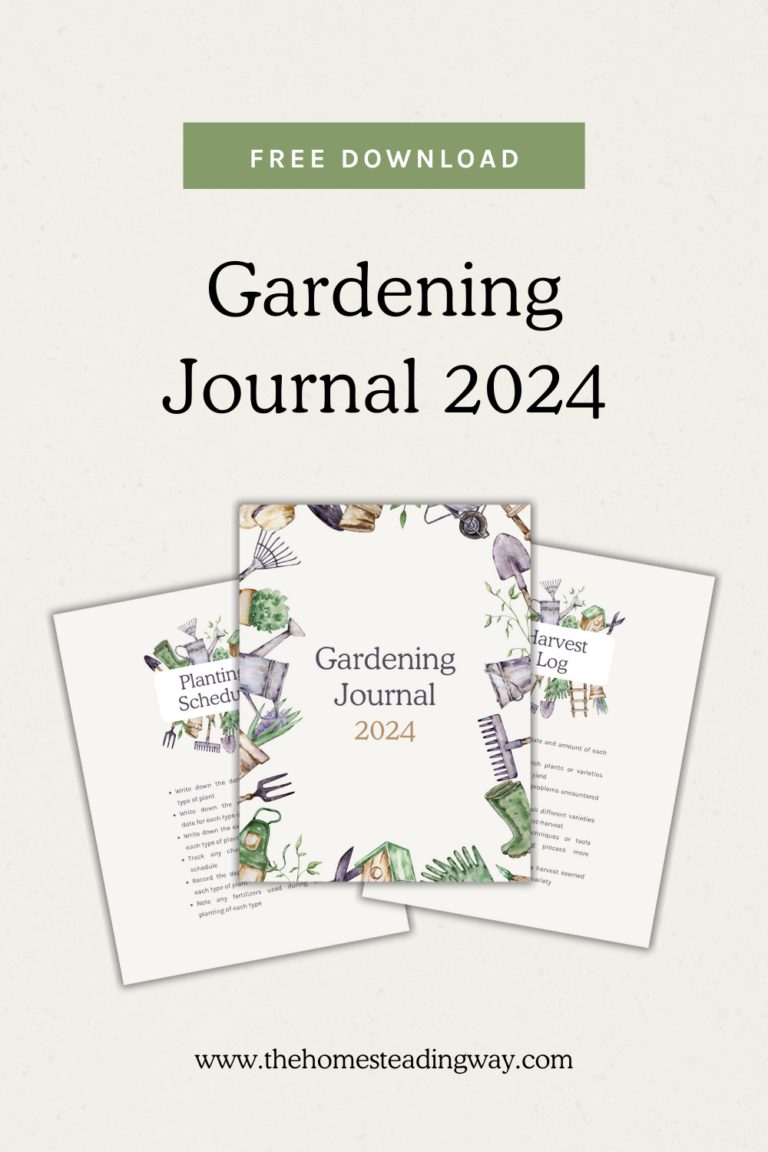Learn how to cure garlic after harvest with this step-by-step guide for drying, trimming, and storing your homegrown bulbs the right way.
I’ve been growing hardneck garlic here in northern Michigan for several years now, and curing is one of the simplest, most satisfying parts of the process.

Whether you’ve grown a few rows or a full year’s supply, curing garlic properly helps prevent mold, sprouting, and rot—so your harvest lasts through the winter and beyond.
In this guide, I’ll walk you through when to harvest garlic, how to cure it using simple tools (like old fencing), and how to store it for long-term use or replanting next season.
Why Curing Garlic Is Important
Freshly harvested garlic may look ready to eat, but it still contains moisture inside the bulbs and stalks. Without proper drying (also called “curing”), that moisture can cause your garlic to mold, sprout early, or rot in storage.
Curing allows the outer layers of the garlic bulb to become dry and papery, sealing in the cloves and helping them store safely for months. If you want garlic that lasts through fall and winter—or garlic you can replant in the garden—curing is non-negotiable.
When to Harvest Garlic for Curing
Knowing when to dig up your garlic is just as important as how you cure it.

Look for these harvest signs:
- The bottom 3-5 leaves have turned yellow or brown.
- The top few leaves are still green.
- The bulb has formed distinct cloves, visible through the wrapping.
- The stem hasn’t fully dried yet—it still has the strength to support hanging.
If you wait too long, the bulbs may split open underground, making them harder to cure and more prone to rot. Don’t wait for all the leaves to die.
How to Harvest Garlic
Here’s how I harvest mine:
I grab each garlic stalk low near the base and gently wiggle it to loosen the bulb. Since my soil is soft and well-worked, the bulbs usually pull right out with no trouble. It’s quick, satisfying, and works great when conditions are just right.

But if your soil is heavier or compacted—or if you’re worried about breaking the stalks—you can always reach for a hand shovel or garden fork. Just loosen the soil around each bulb carefully to avoid damaging the garlic.
Whichever method you use, harvest with care to help your garlic cure properly:
- Don’t Wash Them: Garlic should be kept dry after harvest. Washing can lead to mold or rot during curing.
- Loosen Soil Gently: Use a fork or trowel to lift bulbs if needed—especially in firmer ground.
- Avoid Yanking: Pulling hard can bruise the bulbs or snap the stems.
- Leave Stalks & Roots On: This helps the plant dry down slowly and evenly.

Can You Eat Fresh Garlic Right After Harvest?
Yes, you can eat fresh garlic straight from the garden — but it will be a little different from cured garlic.
Fresh garlic (also called “wet garlic” or “green garlic”) has a higher moisture content and a milder, slightly grassy flavor. The cloves may not be fully set yet, and the skins will still be soft rather than papery.
If you harvest garlic and want to use it right away:
- Gently brush off the dirt — but don’t wash it unless you plan to use it immediately.
- Peel and chop like normal, but expect a softer texture.
- Store unused cloves in the fridge and use within a few days.
Important: If you plan to store garlic for months, don’t skip curing. Fresh garlic will spoil quickly if you don’t allow it to dry down and develop its protective papery layers.
Ideal Conditions for Curing Garlic
Curing isn’t complicated—but it does require the right environment. Whether you’re curing garlic in a shed, barn, porch, or basement, focus on the following:
- Airflow: This is the most important factor. Garlic needs good circulation to dry evenly.
- Temperature: Aim for 70 to 80°F (21 to 27°C). A little warmer is okay if the air is dry.
- Humidity: Low humidity is best. Avoid enclosed, damp spaces like root cellars or basements.
- Light: Keep garlic out of direct sunlight. It can cook the cloves and ruin their flavor.
If you’re curing indoors, place a fan nearby to keep air moving around the bulbs.
How to Cure Garlic After Harvest
Curing garlic is all about good airflow and patience—and you don’t need fancy equipment to do it.
Here’s what I do:
I lay my garlic out in a single layer on an old scrap of fencing propped up over two sawhorses in the garage. Since I grow hardneck garlic, braiding isn’t an option. Instead, I keep the garage doors open during the day to let the air move through. It’s simple, but it works.

You can cure garlic a couple of different ways depending on your setup:
1. Flat Drying (Great for Small Batches or Tight Spaces)
- Lay bulbs in a single layer on a mesh screen, shelf, or old fencing (like I do).
- Make sure there’s good circulation above and below.
2. Hanging Bundles (Ideal for Softneck Garlic or Larger Harvests)
- Gather 5 to 10 bulbs and tie the stalks with twine or rubber bands.
- Hang them bulb-down from a beam, clothesline, or drying rack.
- Leave space between bundles for air to move.

How Long Does Garlic Take to Cure After Harvest?
Curing usually takes 2 to 4 weeks, depending on the weather and humidity. Once the wrappers are papery and the necks are completely dry, your garlic’s ready for trimming and storage.
How to Know Garlic Is Fully Cured After Harvest
You’ll know your garlic is cured when:
- The stalks are completely dry and brittle.
- Outer wrappers are papery and can easily flake off.
- Roots are dry and stringy.
- Bulbs feel firm and no longer cool or damp.
Trimming and Storing Garlic After Curing
Once garlic is fully cured, it’s time to clean and store it:

Trim:
- Cut the stalks at least 1 inch above the bulb.
- Snip off roots with garden scissors or pruning shears.
Clean:
- Brush off extra dirt by hand.
- Remove just the dirtiest outer wrappers—but don’t peel too much. The layers protect the cloves.
Store:
- Use mesh bags, baskets, paper bags, or cardboard boxes.
- Store in a cool (55 to 65°F), dry, dark area with good airflow.
- Do not refrigerate—cold can trigger sprouting.
How Long Will Cured Garlic Last?
Storage time depends on the type of garlic and your conditions:
- Softneck garlic (common in warmer regions): 9 to 12 months.
- Hardneck garlic (often grown in northern zones): 4 to 6 months, sometimes longer. Mine lasts 8+ months.
Avoid storing garlic in sealed containers, plastic bags, or in sunlight.
Common Garlic Curing Mistakes to Avoid
- Don’t wash the bulbs before curing.
- Don’t leave garlic in direct sun.
- Don’t crowd your bulbs—poor airflow causes mold.
- Don’t store in plastic or airtight containers.
Whether you’ve grown one bed or a year’s supply, taking the time to dry and store it right makes all the difference.
Good airflow, patience, and the right storage setup can carry your harvest well into the next growing season—and even supply your next crop.
More Garlic Growing Resources
Love growing garlic from start to finish? Don’t miss these beginner-friendly guides:
Together with this curing guide, they’ll take you from spring harvest to winter storage with confidence.






